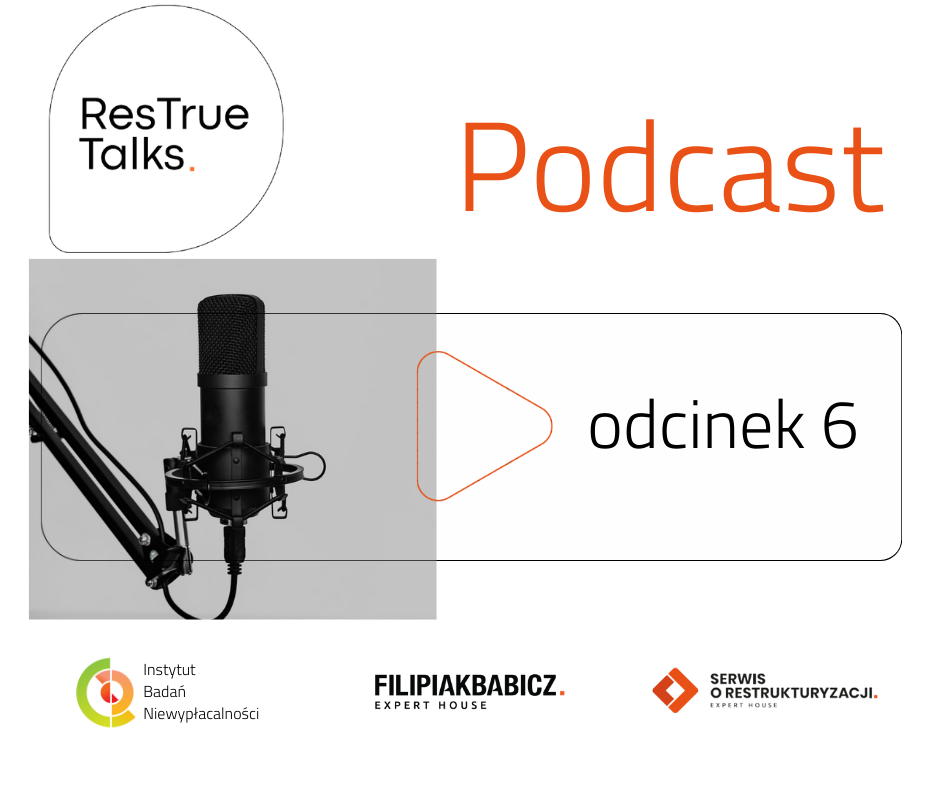
Challenging ineffective actions

The rules for challenging ineffective actions in restructuring and bankruptcy proceedings have changed.
The amendment, which entered into force on 1 December 2021, significantly changed the rules for challenging actions performed to the detriment of creditors in the period preceding insolvency proceedings.
The changes concern: the course of proceedings (including the manner of commencing the case), the parties to the proceedings, securing of the action, the body adjudicating the case, as well as the form of the decision ending the proceedings and the course of the second-instance proceedings.
Obligation to transfer assets
Article 134 Section 1a of the Civil Code has been given a new wording. It describes what will happen if a person obliged to transfer the assets to the bankruptcy estate fails to perform his obligation when summoned by the trustee. If the obligation to transfer the assets to the bankruptcy estate has not been established by a final and binding decision, the trustee may demand by way of an action to order the transfer of the assets. He shall bring the action to the bankruptcy court.
Paragraph 1b of this article provides that the court may secure the action by establishing a prohibition to sell or encumber the assets covered by it. An analogous solution has been introduced in sanitation proceedings (Article 307 p.r.).
How it was before
Previously, as a rule, cases arising from appeals against fraudulent actions were resolved by the judge-commissioner. A complaint against his decision had to be filed with a bankruptcy or restructuring court. The bankruptcy court ruled as a court of first instance. A shortcoming of the previous regulation was the lack of a clear legal basis for the participation of the receiver or administrator. They were not directly specified as participants of the proceedings. The right of the latter to challenge the decision of the judge-commissioner raised particular doubts. Under the previous legal status – as emphasized in the explanatory memorandum to the bill amending the act (Journal of Laws of 2021, item 1080, draft: Printing No. 1016, 9th Sejm) – procedural guarantees of the participants to the proceedings were therefore at risk.
What are the proceedings about?
The scope of the proceedings covers demands for an order to transfer to the bankruptcy estate or the bankruptcy and sanitation estate the object of an action that is ineffective by virtue of the very law (art. 126, 127, 128a p.u. and art. 304 p.r.). It also includes the claims by virtue of the already issued decision declaring the action ineffective (pursuant to Article 527 of the Civil Code, Article 128 or Article 130 of the Banking Law) as well as by virtue of the issued decision establishing the ineffectiveness of the action by virtue of the law (Article 189 of the Civil Procedure Code). In order for an action to be brought, the transfer of assets to the estate must not have been established by a legally valid judgment.
Course of proceedings
Proceedings are initiated by a receiver or administrator. They are exclusively and statutorily entitled to bring an action. The action includes an order of the court to order a third party – the holder of the object of an ineffective action – to hand it over to the bankruptcy estate or the bankruptcy estate in bankruptcy. An action may be brought in the case of refusal to comply with the obligation to hand over, upon an express request of the trustee or administrator, as well as in the absence of a prior determination of the obligation to hand over the object of an ineffective action by a final and binding decision.
The court may secure the action by establishing a prohibition to sell or encumber the assets covered by it. In practice, this makes it problematic to apply other ways of security provided for in the Code of Civil Procedure.
The action is brought via the IT system of the National Debtors Register (KRZ). The NCR also includes all letters and judgments.
Authority to adjudicate the case
The bankruptcy or restructuring court, composed of a single judge (Article 150(1) of the Banking Law and Article 14(2) of the Banking Law), shall adjudicate the case by issuing a judgment. Articles 219 p.u. and 197 p.r. do not apply. Proceedings for challenging an ineffective act shall be held outside the course of formal bankruptcy or restructuring proceedings, just as proceedings for exclusion from the bankruptcy estate (Article 74 of the BC). The judgment is subject to appeal to the court of second instance – the district court (Article 307.4 p.r.). As regards inter-institutional proceedings, the provisions of the p.u. and p.r. apply, which replace the relevant provisions of the c.c.c.
Summary
The changes in the discussed area clarify a number of doubts about the procedural guarantees of the parties in this specific proceeding. The laconic formula of the provisions and the placement of the claim at the junction of procedural and substantive law norms will give rise to a number of interpretation and practical difficulties.
This text is an excerpt from the practical commentary prepared by the author for Wolters Kluwer publishing house. The full version of the commentary is available to LEX system users at:













